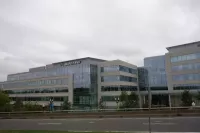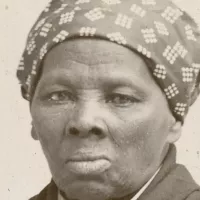Singapore Airlines is the flag carrier of Singapore, operating from its hub at Changi Airport. Recognized as a leading airline, it holds a 5-star rating and has been named the world's best airline by Skytrax multiple times. Its fleet consists of Airbus and Boeing aircraft, including the A350-900, A380, 737 MAX 8, 737-800, 747-400 Freighter, 777-300ER, and 787-10. Singapore Airlines has been a member of the Star Alliance since April 2000.
May 1966: Malaysian Airways became Malaysia–Singapore Airlines
In May 1966, Malaysian Airways (MAL) was renamed Malaysia–Singapore Airlines (MSA).
1997: Discontinued Routes
After the Asian financial crisis in 1997, Singapore Airlines discontinued its routes to Berlin, Darwin, Cairns, Hangzhou, Kagoshima, and Sendai.
October 2005: Introduction of Complimentary Language Lessons
In October 2005, Singapore Airlines began offering complimentary language lessons by Berlitz.
December 2005: Introduction of Live Text-News Feeds
Starting in December 2005, Singapore Airlines began offering live text-news feeds.
2005: Livery Minor Update
In 2005, the Singapore Airlines livery was updated with enlarged wording and logo shifted closer to the front of the aircraft.
October 2006: Major Upgrades to Cabin and In-Flight Service Announced
On 17 October 2006, Singapore Airlines announced major upgrades to its cabin and in-flight service.
December 2006: Discontinuation of Live Television Streaming on Connexion
In December 2006, live television streaming was discontinued on Connexion by Boeing, an in-flight Internet service.
October 2007: Engine Logos Removed
Since October 2007, the engine logos were also subsequently removed.
2007: Introduction of New KrisWorld System
In 2007, Singapore Airlines introduced a new KrisWorld system based on Red Hat Enterprise Linux, featuring a new interface, additional programming, audio and video on demand, and widescreen personal video systems in all cabins. The new KrisWorld is available on Airbus A330, Airbus A380 and Boeing 777-300ER.
2007: Singapore-Kuala Lumpur route liberalisation
In 2007, Singapore Airlines welcomed the liberalisation of the Singapore-Kuala Lumpur route.
September 2008: Share capacity
As of 22 September 2008, Singapore Airline's capacity share on the route down to about 46.7%, Malaysia Airlines' down to 25.3%, and increase to 17.3% to the three LCCs now permitted on the route, and the remainder shared by three other airlines.
December 2008: Flights operated by Singapore Airlines
Until 1 December 2008, Singapore Airlines operated six flights per day. Singapore Airlines operated four flights per day plans from 1 December 2008 when the route was completely opened, while its sister airline SilkAir also operated four flights per day.
July 2009: Introduction of New Cabin Design on Boeing 777 Aircraft
In July 2009, Singapore Airlines introduced a new cabin design on board the Boeing 777 aircraft through its ongoing cabin retrofit program. On 22 July 2009, the Boeing 777–300 was the first model to undergo refit and introduced the product on the Singapore–Sydney route. The aircraft were equipped with slightly smaller 9-inch screens and AVOD in each seat.
2009: Vancouver and Amritsar Discontinued
In 2009, Singapore Airlines discontinued flights to Vancouver and Amritsar.
2010: Publication of Cookbook
In 2010, Singapore Airlines published a cookbook titled 'Above & Beyond: A Collection of Recipes from the Singapore Airlines Culinary Panel'.
August 2012: Launch of In-Flight Connectivity and New KrisWorld Entertainment System
In August 2012, Singapore Airlines launched its in-flight connectivity and unveiled a $400 million new KrisWorld entertainment system from Panasonic Avionics featuring larger screens, higher resolution, wide touch-screen controllers, new software, and in-flight connectivity. Passengers could make phone calls, send text messages, and access the Internet for a fee.
July 2013: Unveiling of Redesigned Economy Class Seat
On 9 July 2013, Singapore Airlines unveiled a redesign of the economy class seat along with new first and business class products, including features like 32-inch legroom, slimmer seats, adjustable headrests, and an 11.1-inch touch-screen inflight entertainment system with KrisWorld software.
July 2013: Unveiling of Current Business Class Version
On 9 July 2013, the current version of the Business Class was unveiled.
October 2013: Termination of Nonstop Service to Los Angeles
On October 2013, Singapore Airlines terminated its nonstop flights from Singapore to Los Angeles with Airbus A340-500 aircraft, although the airline continues to serve Los Angeles via Tokyo-Narita.
2013: Dropped New York Flights
In 2013, the airline had dropped New York Flights.
October 2015: Plans to Resume Non-Stop Flights Between Singapore and New York
On 14 October 2015, Singapore Airlines announced plans to resume the world's longest non-stop flight between Singapore and New York.
October 2016: Resumption of Non-Stop Flights to San Francisco
On 23 October 2016, Singapore Airlines resumed non-stop flights from Singapore to San Francisco using the A350-900 aircraft.
November 2017: Unveiling of New A380 Business-Class Seats
On 2 November 2017, the new A380 business-class seats were being progressively rolled out on the Airbus A380-800 fleet.
December 2017: First City Served with New Cabin Products
On 18 December 2017, Sydney was the first city served with the new cabin products for the Airbus A380-800.
March 2018: Unveiling of New Regional Business Class
On 28 March 2018, the new regional business class was unveiled following the delivery of the first Boeing 787-10.
May 2018: Capital Express Route Change
In May 2018, Singapore Airlines changed the intermediate stop for its Singapore to Wellington, New Zealand route from Canberra to Melbourne, known as the Capital Express.
November 2018: Resumption of Non-Stop Flights to Los Angeles
From 2 November 2018, Singapore Airlines resumed non-stop flights to Los Angeles with the delivery of the Airbus A350-900ULRs.
February 2019: Report on Privacy Concerns with Singapore Airlines Mobile App
In February 2019, TechCrunch reported that the Singapore Airlines mobile app in the iOS App Store was using session-replay functionality to record users' activities and send the data to Israeli firm Glassbox without users' informed consent.
March 2020: Temasek Holdings Ownership
As of March 2020, Singapore Airlines is majority-owned by Temasek Holdings, the Singapore government's investment company, which holds 55% of voting stock.
March 2020: Suspension of Singapore-New York Route
In March 2020, the Singapore-New York route was suspended due to the COVID-19 pandemic.
November 2020: Relaunch of Nonstop Flights Between Changi Airport and New York
On 9 November 2020, Singapore Airlines relaunched the nonstop flights between Changi Airport and New York, but this time to John F. Kennedy International Airport.
2020: Capital Express Route suspended due to COVID-19
In 2020, the Capital Express route was suspended due to the COVID-19 pandemic.
2020: Retrofitting of Existing A380 Fleet
Until 2020, the existing Airbus A380 fleet had these new products retrofitted.
March 2021: Second Re-Introduction of Boeing 737
Singapore Airlines operates a predominantly widebody fleet, until the second re-introduction of the Boeing 737 in March 2021 following the merger with SilkAir.
March 2022: Resumption of Singapore-New York Route
In March 2022, Singapore Airlines resumed flights on the Singapore-New York route.
November 2024: Investment in Long-Haul Aircraft Overhaul
In November 2024, Singapore Airlines announced a S$1.1 billion investment to overhaul the seats in its long-haul aircraft, including all-new first- and business-class products.
November 2024: Impact of supply-chain issues
In November 2024, Singapore Airlines reported feeling the impact of the aviation industry's widespread supply-chain issues, estimating to have five fewer aircraft than planned by the end of the 2024 fiscal year.
January 2025: SIA Named Top Airline on Fortune’s List
On 29 January 2025, Singapore Airlines (SIA) was named the top airline, securing the 28th position on Fortune’s list of the world’s most admired companies.
February 2025: Aircraft registered in the Singapore Airlines fleet
As of February 2025, there were 163 aircraft registered in the Singapore Airlines fleet, comprising 151 passenger aircraft and 12 freighters.
February 2025: Fortune magazine published the annual World’s Most Admired Companies
On February 2025, Fortune magazine ranked Singapore Airlines 28th in the annual World’s Most Admired Companies. Within the airline category, Singapore Airlines was the world's second most admired airline.
Mentioned in this timeline

John F Kennedy JFK was the th U S President...
New Zealand is an island country located in the southwestern...
India officially the Republic of India is a South Asian...

San Francisco is a major commercial financial and cultural hub...

Las Vegas Nevada's most populous city and the seat of...

The Boeing Company is a multinational corporation and one of...
Trending
Greg Olsen is a former NFL tight end and current sportscaster Drafted by the Chicago Bears in he is best...
2 months ago Rome Odunze equals Walter Payton's Bears feat; Caleb Williams shines with TD pass.

Cooper Kupp is a professional American football wide receiver renowned for his exceptional skills and achievements in the NFL He...
28 days ago Kyle Pitts' Week 10 Fantasy Outlook: Start or Sit Advice and Injury Updates.

4 months ago Myles Garrett sets Super Bowl goal, Stefanski faces pressure, DPOY odds revealed.

4 days ago Spurs vs Magic Game Preview: How to Watch NBA Live Stream Online
Popular
Matt and Ross Duffer known as the Duffer Brothers are...
Aftyn Alyssa Behn is an American politician currently serving as...

Candace Owens is an American conservative political commentator and author...

XXXTentacion born Jahseh Dwayne Ricardo Onfroy was a controversial yet...

Ilhan Omar is an American politician currently serving as the...

Harriet Tubman was a pivotal American abolitionist and social activist...